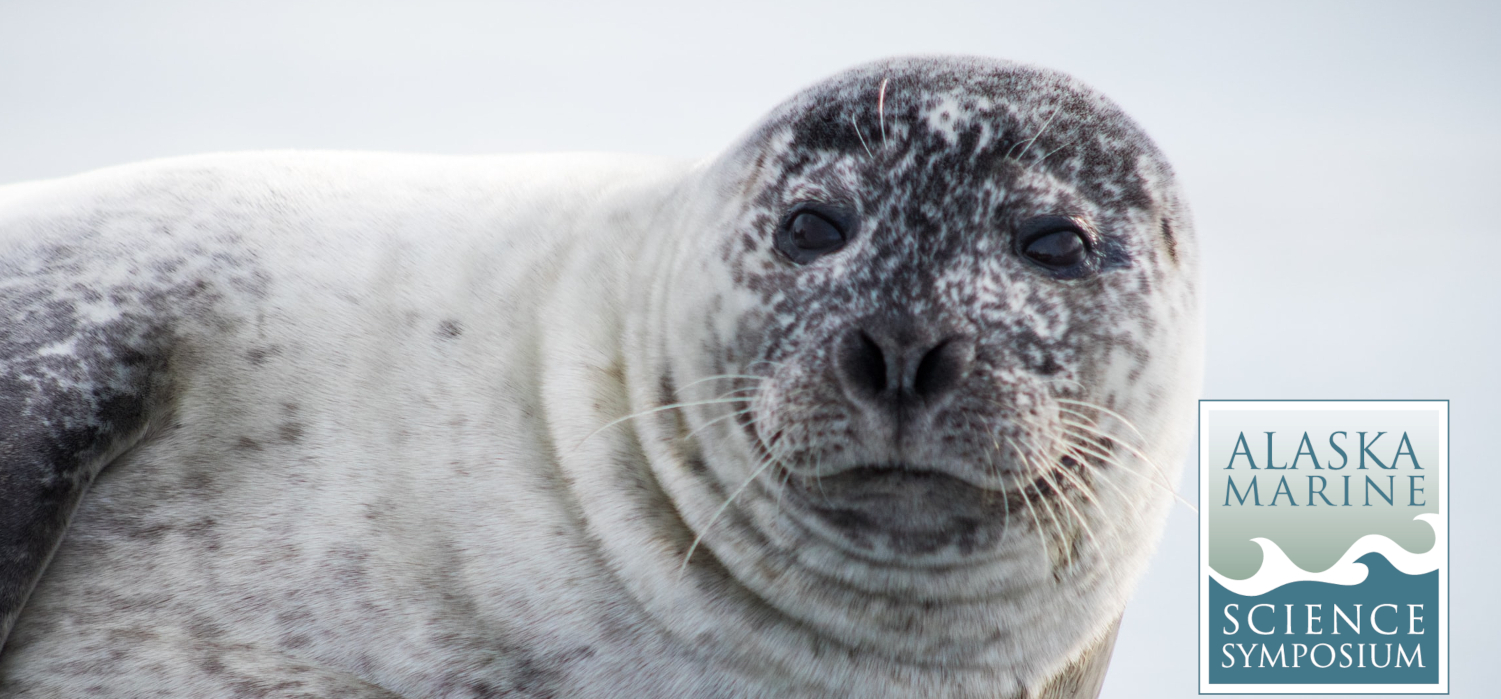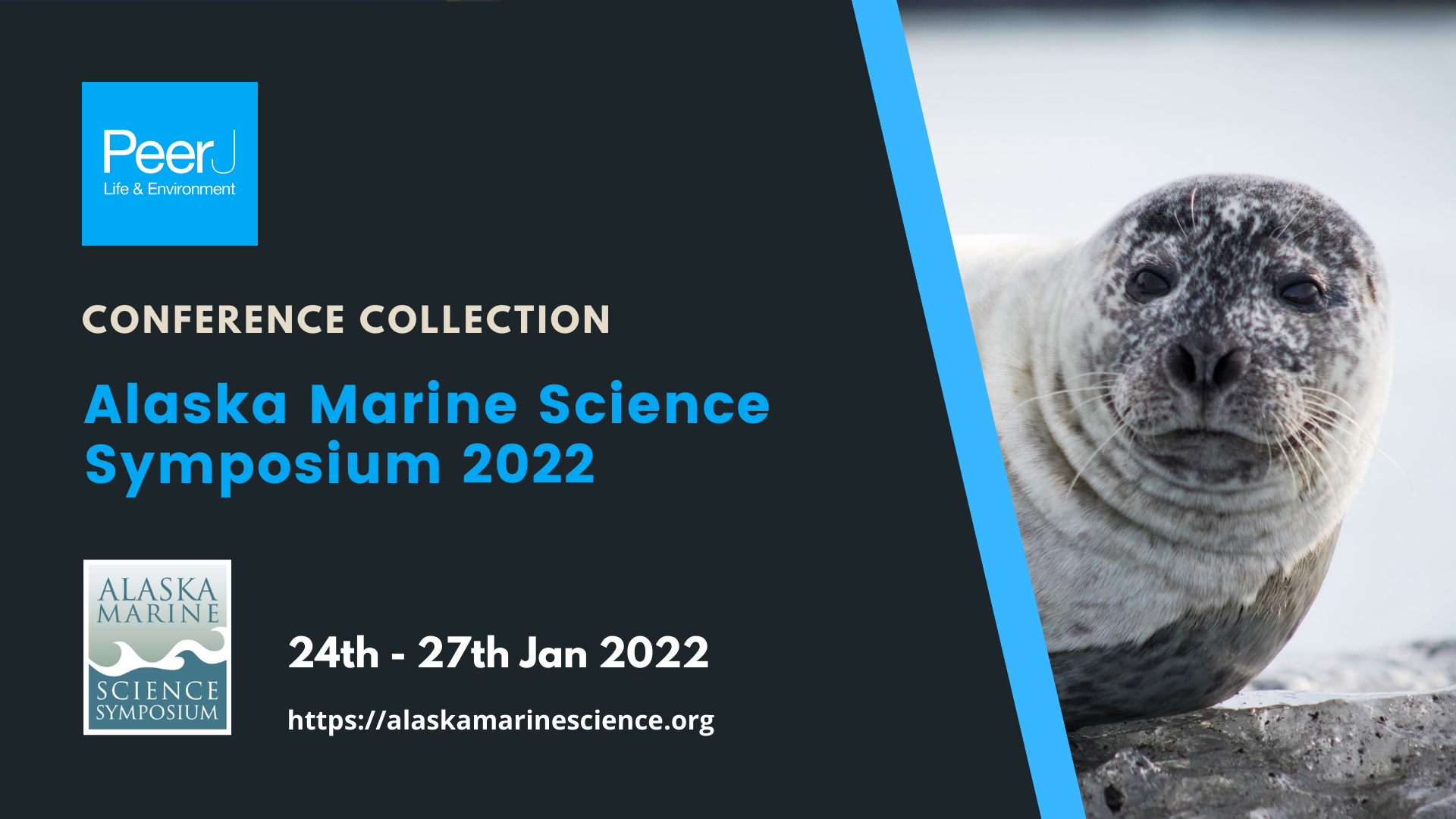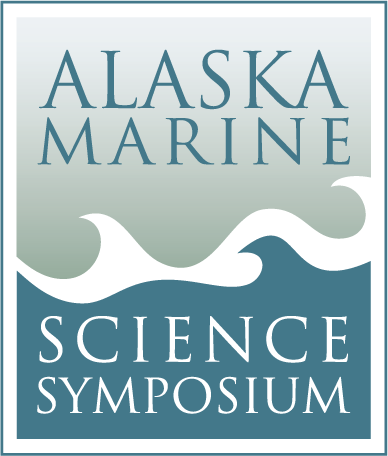 The Alaska Marine Science Symposium (AMSS), Alaska’s premier marine research conference, has been bringing together scientists, educators, resource managers, students, and interested public for over twenty years to discuss the latest marine research being conducted in Alaskan waters.
The Alaska Marine Science Symposium (AMSS), Alaska’s premier marine research conference, has been bringing together scientists, educators, resource managers, students, and interested public for over twenty years to discuss the latest marine research being conducted in Alaskan waters.
Following on from PeerJ’s sponsorship of Early Career Awards at the 2021 AMSS, we have again teamed up with the symposium to support their 2022 meeting which ran from 24th – 27th January 2022. PeerJ sponsored six Early Career Researchers awards, with each winner receiving a free publication in any PeerJ journal (subject to peer review) and the opportunity to discuss their research on our blog.
*******
AMSS 2022 Conference Collection: A reminder to all those involved with AMSS 2022 that PeerJ will be publishing a Conference Collection based on the themes of the Alaska Marine Science Symposium. Submissions can be made by any researcher that presented at or attended the AMSS 2022 meeting, with encouraged research topics – where related to the Alaskan marine ecosystem – including ocean physics (climate & oceanography; lower trophic levels), fishes and invertebrates, seabirds, marine mammals, human dimensions, and habitatat/ecosystem perspectives. Please see our launch blog for full details!
*******
Kimberly Ovitz PhD student at the University of Manitoba; Research Affiliate with Fisheries and Oceans Canada
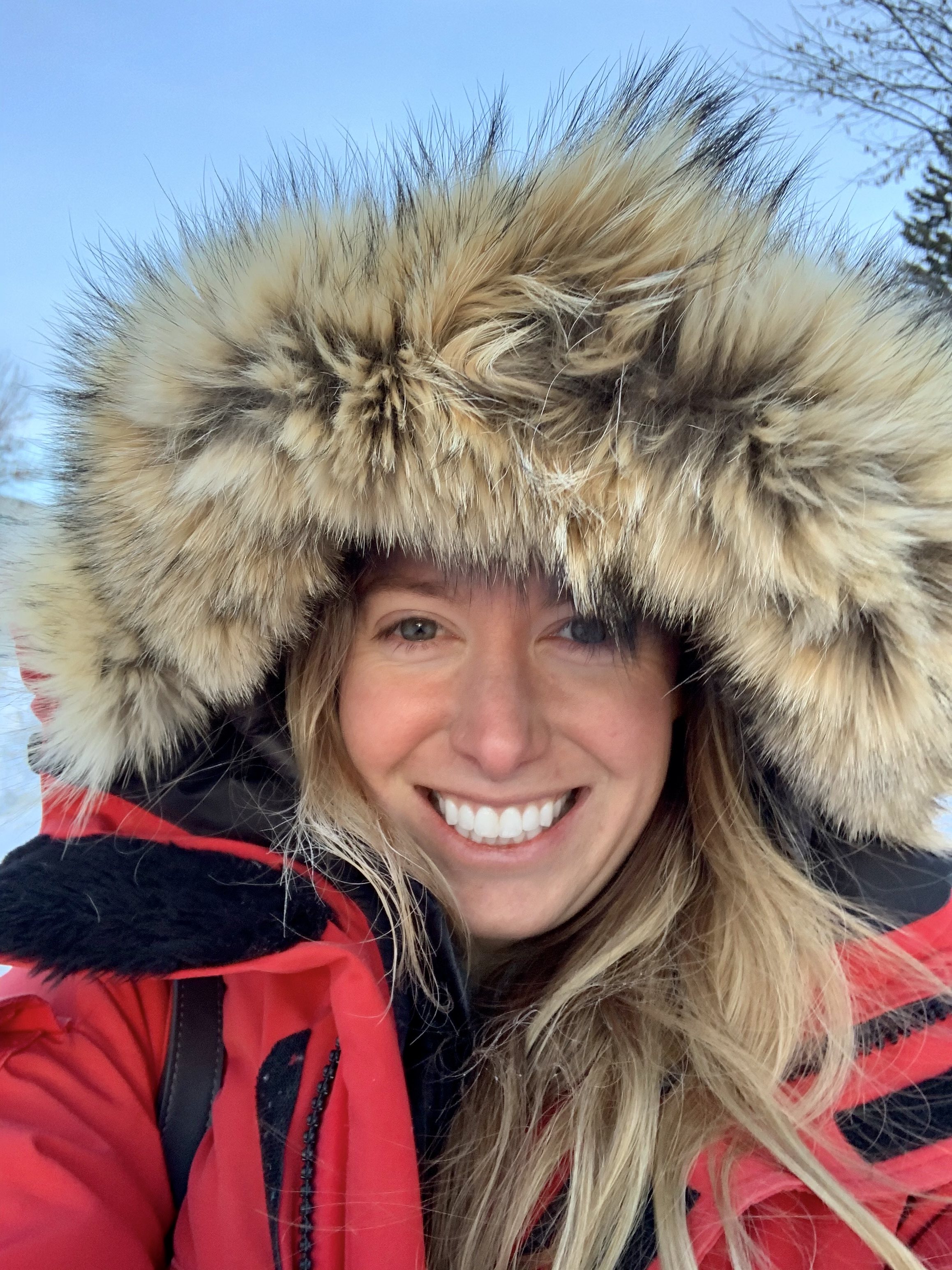 Can you tell us a bit about yourself and your research interests?
Can you tell us a bit about yourself and your research interests?
I am originally from Chicago and obtained my undergraduate degree in Social Thought and Political Economy from the University of Massachusetts and my Masters of Science in Marine Conservation and Policy from the University of Maine.
My work is situated at the society-ecology intersection, and I am passionate about bringing together diverse bodies of knowledge to explore ecological phenomena and inform wildlife conservation and management. I am particularly invested in employing participatory and collaborative research approaches that include Indigenous and local knowledge holders in project design and implementation and in conducting multidisciplinary mixed-methods research to understand wildlife movements, interactions, and environmental change.
Over the past decade I have contributed to a variety of environmental research and monitoring initiatives across the United States and Latin America. This includes recently leading the design and launch of the Alaska Beluga Monitoring Partnership (AKBMP) a participatory beluga monitoring program based in Anchorage, Alaska. I currently reside in Canada and am pursuing a PhD exploring beluga movement and behavior in the Eastern Beaufort Sea.
What first interested you in this field of research?
My undergraduate degree involved examining environmental dilemmas from a critical perspective and exploring how systems of power and privilege shape natural resource access and decision-making. This solidified my interest in working in partnership with communities that have experienced marginalization or dispossession via colonization or other forms of oppression. Later, I ended up taking several marine science courses and transitioned to working in fisheries ecology and eventually participatory wildlife monitoring.
Can you briefly explain the research you presented at the Alaska Marine Science Symposium 2022?
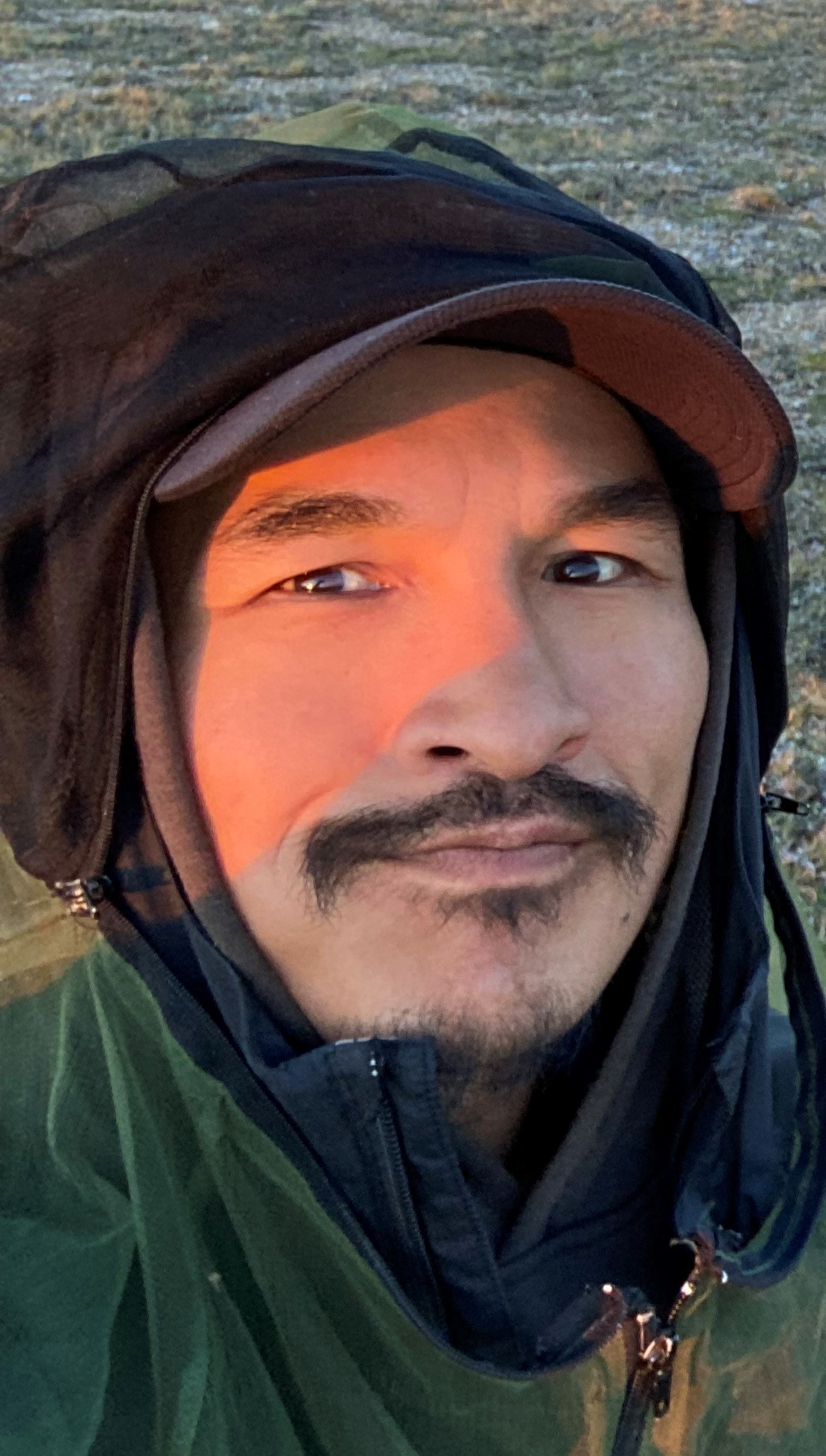
Jody Illasiak Jr.
The research that we presented is a project that I’m leading in collaboration with the Paulatuk Hunters and Trappers Committee (PHTC) and researchers from Fisheries and Oceans (Kevin Scharffenberg, Shannon MacPhee, Lisa Loseto) and Natural Resources Canada (Dustin Whalen). This work was first initiated in the summer 2021 in response to research priorities identified by the PHTC and the Anguniaqvia Niqiqyuam Marine Protected Area (ANMPA) Working Group. This project involves coupling drone surveys and qualitative methods to explore beluga activity in Darnley Bay, an area for which there remains limited systematic and scientific data on beluga. Through this project, local environmental monitors (Frank Wolki and Joe Illasiak) were trained to operate project drones to acquire aerial photo and video of beluga at key sites identified by Inuvialuit Knowledge holders. Although this project is still in its early stages, I attribute our initial success to our dynamic transdisciplinary team and to the PHTC’s direction and ongoing dedication to this work.
My co-presenter on this presentation was Jody Illasiak Jr. Jody is a resident of Paulatuk, a full-time harvester, and a Director on the PHTC. I would like to highlight the collaborative nature of this work and the contribution of our Northern research partners as that is central to our success.
What are your next steps?
The work we presented at AMSS was a smaller scale pilot project that we initiated to assess the feasibility of our study design in relation to site characteristics (i.e., high winds and inclement weather) and pandemic-related travel restrictions which limited in-person collaboration. Since this proof-of-concept was a success, we look forward to scaling up this project (exploring new sites and potentially incorporating additional methods such as acoustic monitoring) and to holding workshops with knowledge holders in Paulatuk to interpret our project data.
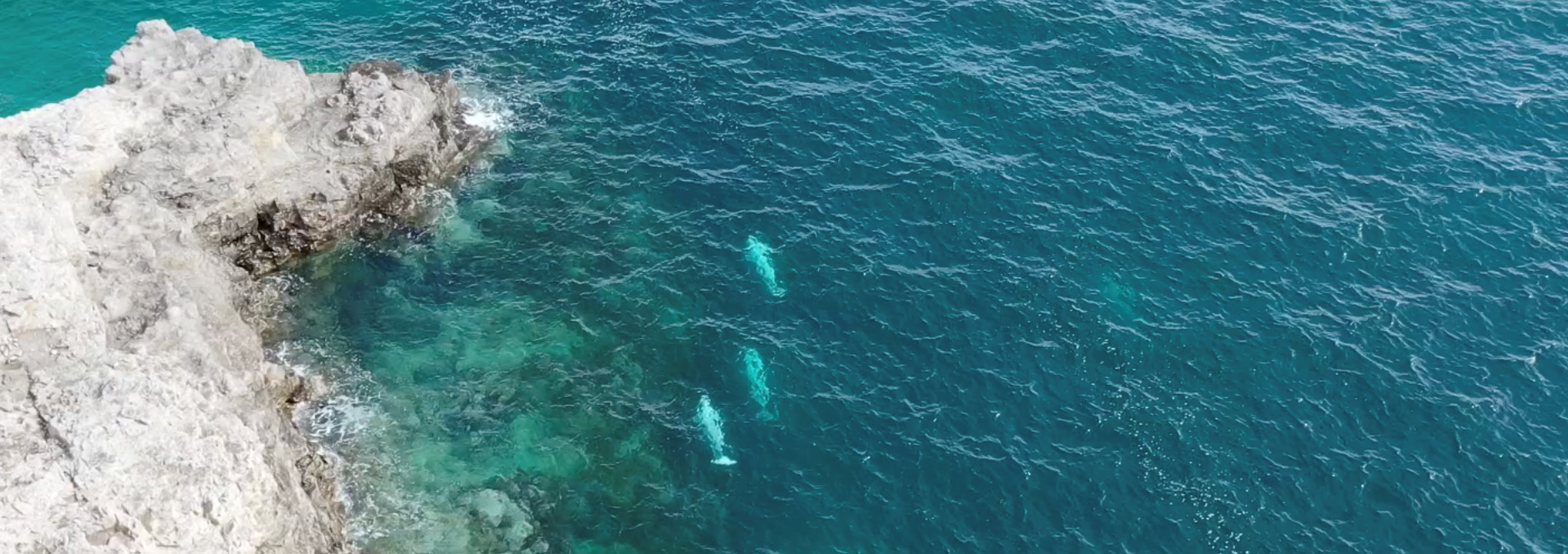
Aerial footage of belugas at Johnny Green’s Bay in July 2021 (photo: Frank Wolki and Joe Illasiak Jr.)
How did you find the virtual conference experience?
There are advantageous elements to attending a virtual conference but also some obvious limitations. Being able to pre-record our talk enabled me to get a little more creative and incorporate more video and audio than I would have been able to integrate into a traditional live presentation. I think the online format this year also made the symposium more accessible to a wider audience including some of our Northern research partners and community members that may not have been able to travel to Anchorage for this event. Lastly, it’s also great to know that I have an extended period of time to explore some of the presentations that I didn’t get to watch during the symposium. That said, I do miss the networking and relationship-building that in-person conferences allow and look forward to attending AMSS live in Alaska when conditions permit.
More information about Kim and her research are available at kimberlyovitz.squarespace.com.
Hillary Thalmann Ph.D. Student in Fisheries Science at Oregon State University
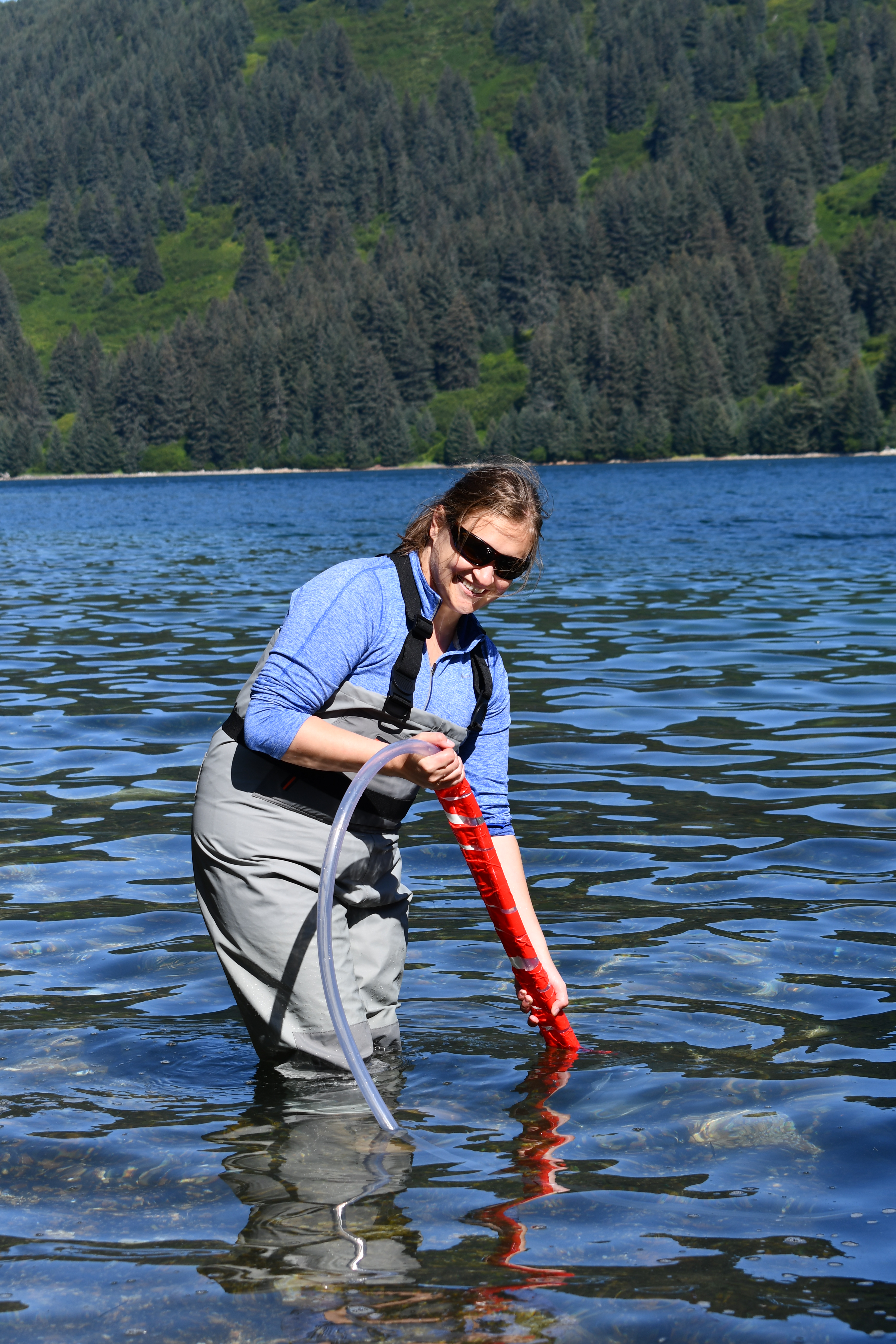 Can you tell us a bit about yourself and your research interests?
Can you tell us a bit about yourself and your research interests?
I am in the fourth year of my graduate program in Fisheries Science at Oregon State University, and I recently rolled into a Ph.D. in this program. I am interested in the effects of extreme temperatures and marine heatwaves on the growth, foraging, metabolism, and bioenergetics of marine fishes. In recent years, there have been several marine heatwave events in Alaska and the U.S. West Coast that have impacted a number of important commercial fish species. My dissertation research focuses on the response of Pacific Cod to marine heatwaves in the Gulf of Alaska, and I have previously worked on projects related to early marine Steelhead response to heatwaves in the California Current Ecosystem.
Can you briefly explain the research you presented at the Alaska Marine Science Symposium 2022?
This project explores the effects of marine heatwaves on juvenile Pacific Cod foraging and growth in the Gulf of Alaska. Pacific Cod declined by ~75% in abundance following two marine heatwave events, and I am interested in understanding how their diet composition and growth changed in response to this extreme warming. Pacific Cod were about 30% larger during heatwave years, likely due to faster growth early in their lives and earlier hatch dates during the heatwave. Their diets shifted in heatwave years to include larger and more variable prey items, which may be due to their larger sizes and increased ability to consume larger prey. During their juvenile life stage, growth was also elevated in heatwave conditions. These results suggest that during heatwaves, surviving Pacific Cod tend to be bigger, grow faster, and consume larger prey, which may have implications for how well they are able to prepare for overwintering conditions following a marine heatwave.
You won a PeerJ award at AMSS 2021 for Best ECR Presentation – Is this an expansion on what you presented last year, or do you have a different focus at the moment?
This research expands on the project that I presented at AMSS last year. In this past year, I have completed the remaining diet and growth collections and statistical modelling for this project, so my talk this year expanded upon the preliminary data trends that I presented last year. My collaborators and I are very close to finishing up this project, and we hope to submit it for publication later this year!
What are your next steps?
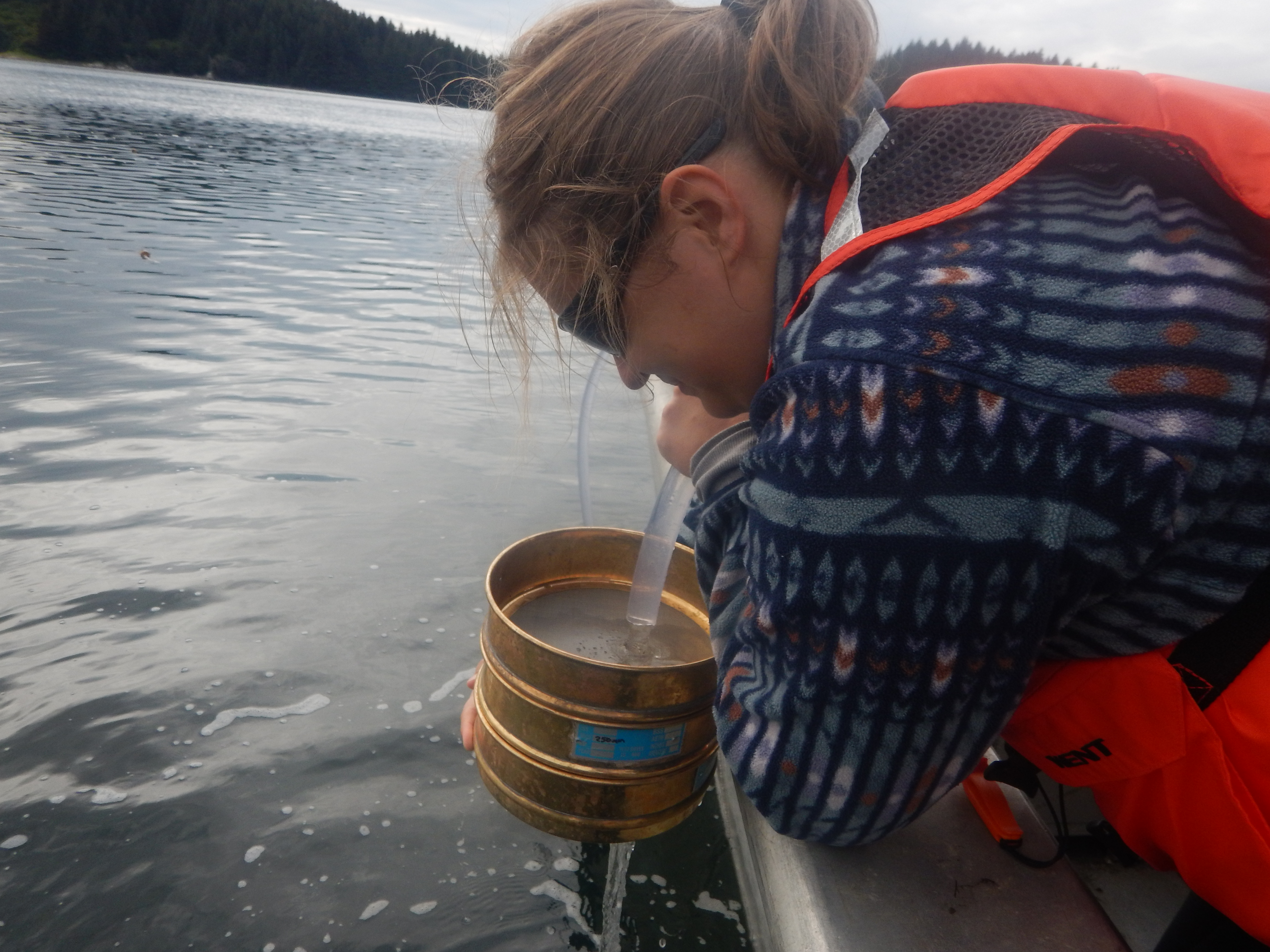
Kodiak Prey Sampling (Photo: Kodiak Coastal Environmental)
As Pacific Cod forage and grow in warming environments, it is important for scientists and managers to understand how Pacific Cod metabolism changes in warm conditions. Generally, as temperatures warm, fish metabolism increases, requiring individuals to consume more food in order to grow and develop normally. However, there are not a lot of tools available for accurately measuring metabolic rates in wild fishes. My next dissertation chapter will focus on a new method using otolith stable isotope chemistry to evaluate whether otolith carbon isotopes can serve as proxies for metabolic rate. I hope to present this new project at AMSS 2023, so stay tuned!
Alexandria Sletten M.Sc. candidate at the University of Alaska, Fairbanks
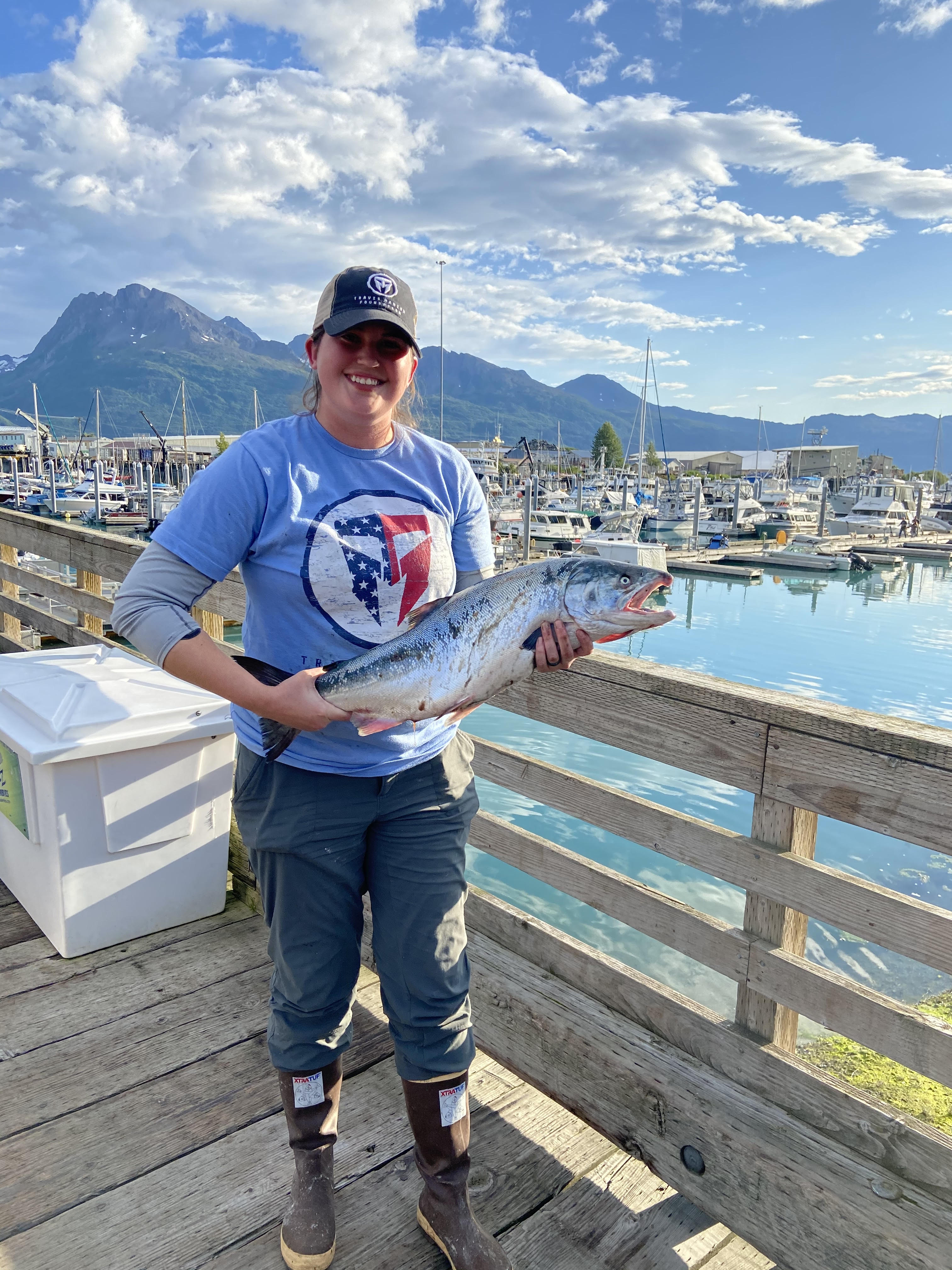 Can you tell us a bit about yourself and your research interests?
Can you tell us a bit about yourself and your research interests?
I am a current master’s student at the University of Alaska Fairbanks in the Marine Biology Program of the College of Fisheries and Ocean Sciences. I completed my undergraduate degree at UAF in wildlife biology in May 2021. While finishing my undergraduate degree, I began an internship with the Alaska Department of Fish and Game Arctic Marine Mammal Program. This changed my career trajectory to the marine environment as I really enjoyed the work and the many Arctic marine species. I want to continue to research and understand marine mammals and how they are adapting to a changing environment.
Can you briefly explain the research you presented at the Alaska Marine Science Symposium 2022?
My current project for my master’s degree is to identify and quantify the presence of microplastics in the stomachs of spotted seals (Phoca largha). To do so I am using an enzymatic digestion process on the stomach contents and then filtering the remaining sample for examination under a stereomicroscope. My poster presentation at AMSS was on the methodology refinement of this process and I was successfully able to isolate and quantify microplastics within the stomach contents of spotted seals.
What are your next steps?
Now that the methodology has been developed, I will begin processing stomachs for spotted seals from each age class, year, and harvesting community to identify temporal changes in microplastic abundance. I fully intend to provide a project update at next year’s AMSS if selected.
How did you find the virtual conference experience?
I enjoyed AMSS in a virtual format. It is always great to meet other professionals and academics in a face-to-face setting, but the virtual format is very accommodating to busy class and work schedules which makes it helpful.
Brian Ulaski Ph.D. candidate at the University of Alaska, Fairbanks
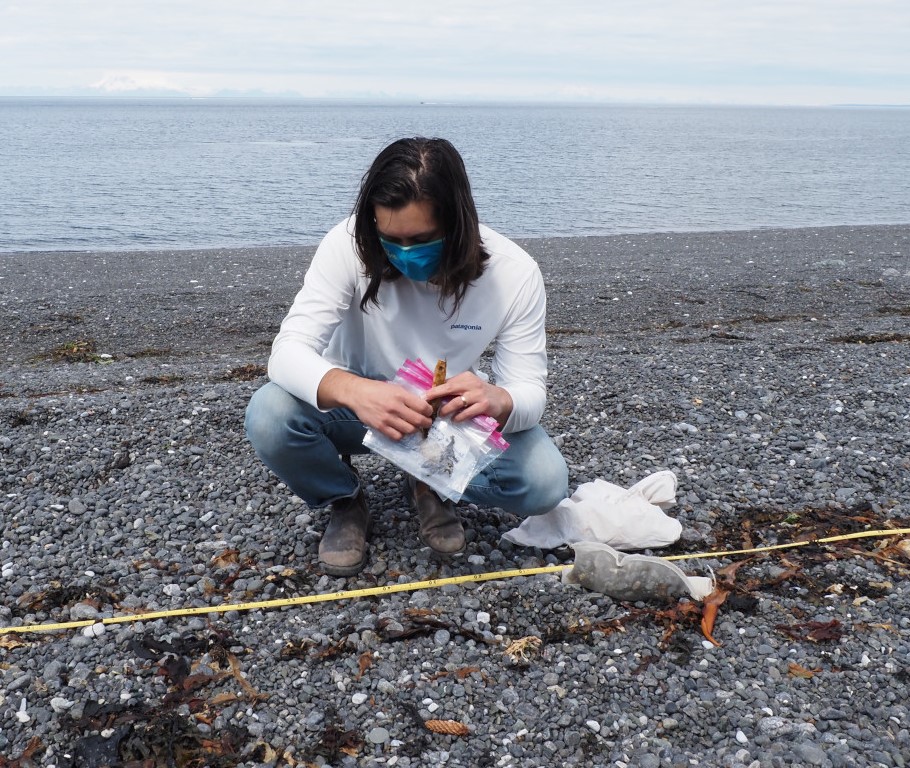
Photo: Alice-Bailey
This is your second PeerJ Award from AMSS, can you remind us about yourself and your research interests?
I grew up in California and attended the University of California Santa Barbara where I got my B.S. degree in Aquatic Biology. While at UCSB, I volunteered in as many marine biology labs as I could. Working in a sandy beach ecology lab really focused my interests on intertidal ecology. I became interested in how communities survive in such extreme conditions of the intertidal.
Can you briefly explain the research you presented at the Alaska Marine Science Symposium 2022?
Part of my Ph.D. research is investigating how Alaskan macroalgal wrack serves as habitat on the beach, while also serving as a natural resource for humans. At AMSS 2022, I presented results from data that were collected in 2018 and 2021 on drifting and beach-cast macroalgal wrack assemblages. I also presented preliminary results on macroinvertebrate communities found in wrack.
You won a PeerJ award at AMSS 2021 for Best ECR Poster – Is this an expansion on what you presented last year, or do you have a different focus at the moment?
This work is an expansion on what I presented last year. Last year I presented preliminary data from 2018 fieldwork on beach-cast wrack distribution, and this year I was able to share what I’ve learned so far about the animals that may use wrack in a high latitude glacially influenced estuary.
What are your next steps?
I’m continuing to analyze these data. Next steps include looking at shorebird survey data to determine associations between these higher trophic level consumers and wrack.
Addie Norgaard Ph.D. candidate at the University of Alaska, Fairbanks
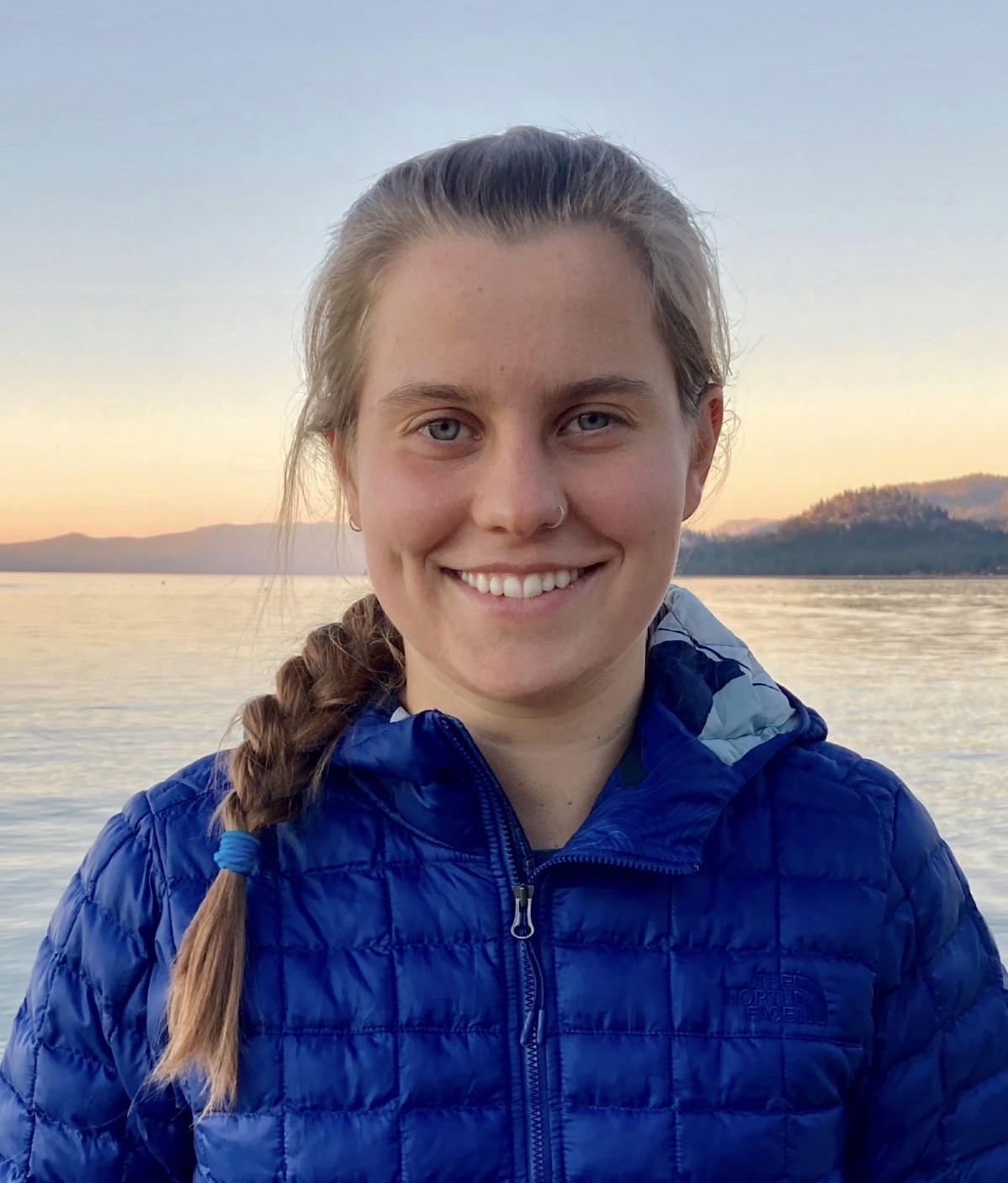 Can you tell us a bit about yourself and your research interests?
Can you tell us a bit about yourself and your research interests?
I am a first-year PhD student at the University of Alaska Fairbanks. My oceanography degree course is offered through the College of Fisheries and Ocean Sciences, and my research is housed in the International Arctic Research Center.
Advised by Dr. Claudine Hauri, I am studying inorganic carbon cycling in the Gulf of Alaska using ship-based sampling, autonomous observing systems, and biogeochemical model output. The Gulf of Alaska is experiencing change including increasing occurrence of marine heatwaves, increasing freshwater inputs due to warming temperatures and ocean acidification due to the absorption of atmospheric anthropogenic carbon dioxide. Scientists are working to understand ecosystem change in the region, and the inorganic carbon system is one aspect of this. The inorganic carbon system controls chemical conditions including pH, calcium carbonate saturation state, and partial pressure of carbon dioxide (pCO2) which all can impact organism physiology. Underlying inorganic carbon conditions, including seasonal and spatial patterns, will impact how harmful conditions emerge in the Gulf of Alaska as ocean acidification progresses. Understanding inorganic carbon dynamics allows us to detect ocean acidification trends, identify when and where harmful conditions emerge, and study impacts of ocean acidification.
Can you briefly explain the research you presented at the Alaska Marine Science Symposium 2022?
I presented some of the first data returns from the pCO2 sensor moored at the Gulf of Alaska Ecosystem Observatory. The year-round, high frequency measurements are exciting because traditional sampling methods don’t provide that kind of temporal coverage. The data showed the full range of pCO2 conditions over the year at the site, and allowed insight to the seasonal controls of pCO2. In the future, analysis of this data will include additional sensor measurements of oxygen, pH, and chlorophyll to understand the system more fully. I will be working to integrate our understanding of inorganic carbon dynamics in the Gulf of Alaska using a suite of tools including ship-based water samples, biogeochemical model output, and hopefully soon sensor data from an underwater glider, which is in development for the region.
What originally drew you to this topic?
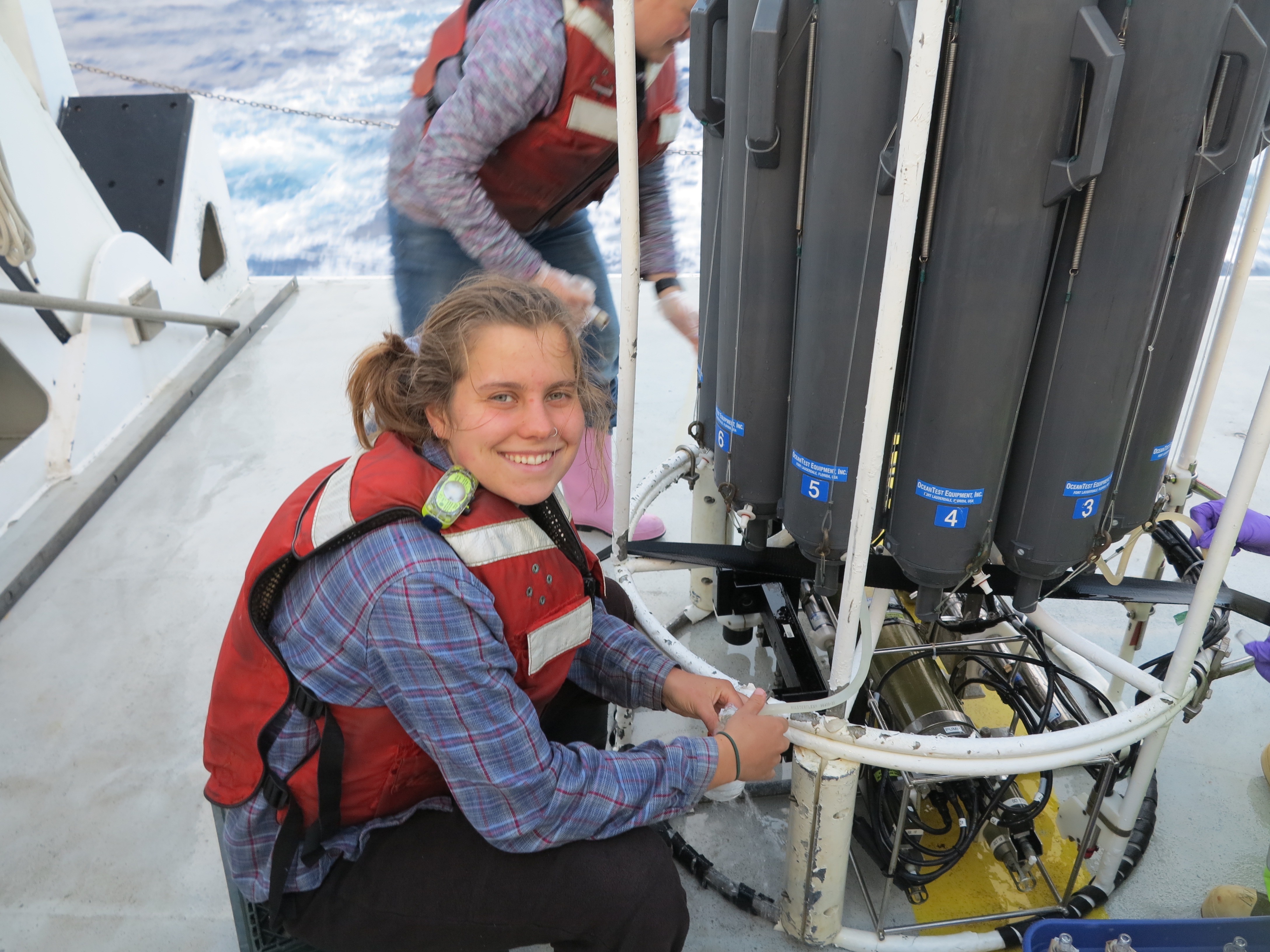
On R/V Western Flyer (operated by MBARI)
I studied chemistry at my undergraduate institution, and was especially interested in analytical chemistry and its application to the environment. Undergraduate research in coastal and estuarine inorganic carbon cycling led me to this field. Chemical oceanography merged my interests of chemistry and earth science. I am drawn to this field because it relates to ocean acidification, which I am motivated to study, and also because it is relatively new with developing technologies, particularly in autonomous sensing.
How did you find the virtual conference experience?
I enjoyed this virtual conference experience. I hope for in-person conferences in the future because of the more immersive experience that allows for better connections, but I am grateful that the virtual experience was possible and that it allowed for increased attendance.
Megan Brauner Ph.D. candidate at the University of Alaska, Fairbanks
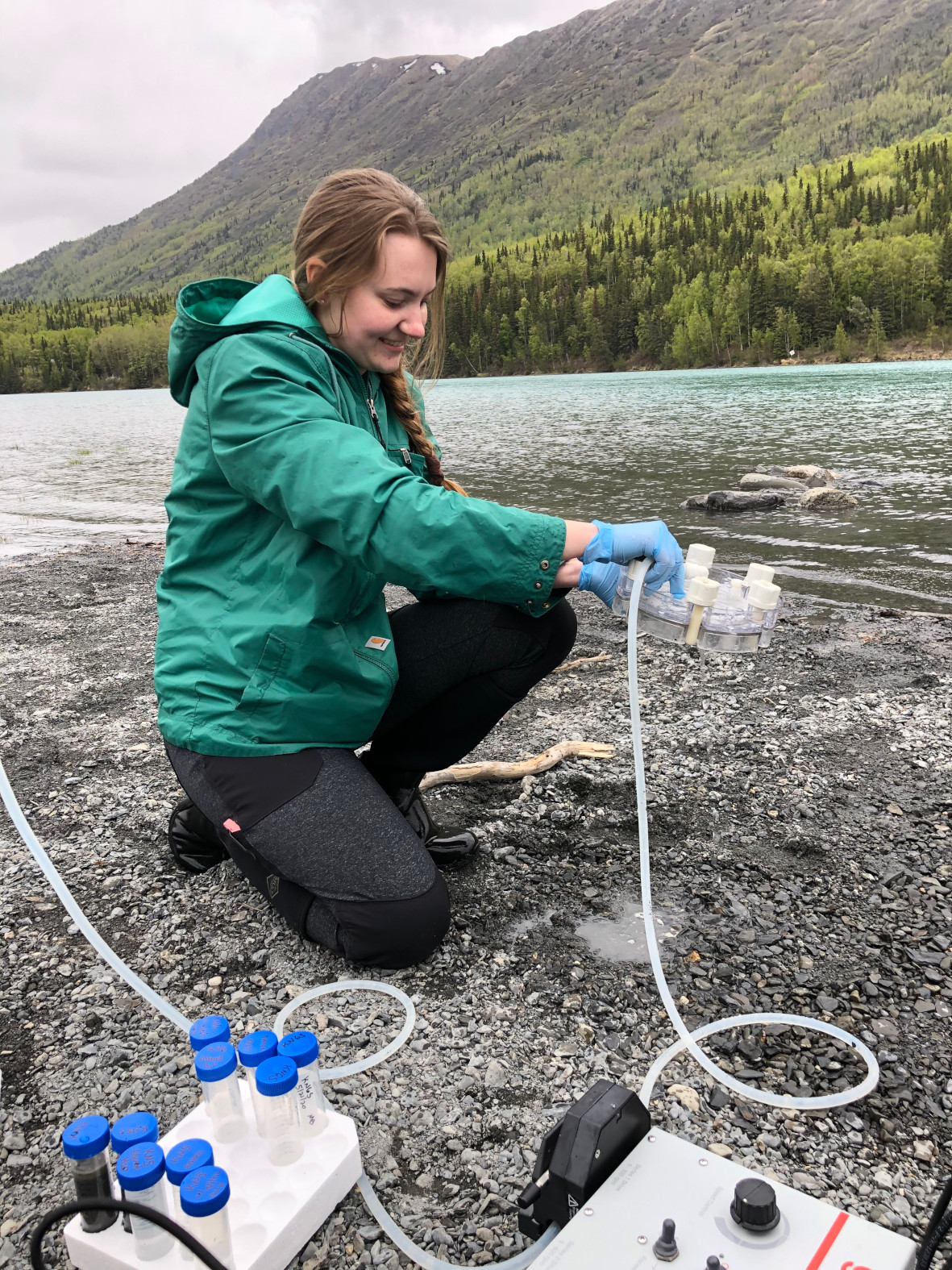 Can you tell us a bit about yourself and your research interests?
Can you tell us a bit about yourself and your research interests?
I came to Alaska after completing my Bachelor of Science degree from Washington State University to work with my advisor Dr. Brandon Briggs and complete a master’s degree. My interest was related to microbial iron metabolism and siderophores in the Kenai River, Alaska. I recently graduated from University of Alaska Anchorage with my Master of Science in Biological Sciences in December 2021. After I began my PhD in Biological Oceanography through the University of Alaska Fairbanks in Spring 2022 working with Dr. Briggs and Dr. Gwenn Hennon. I love that my research includes field work and allows me to explore beautiful Alaska! When I am not researching, I enjoy spending time biking, hiking, skiing, and even kayaking with my three dogs.
What originally drew you to this topic?
My love of microbiology began when I was an undergraduate student. I developed an interest in environmental microbiology and the processes/ metabolisms microbes use under different environmental conditions. Iron was an element that especially caught my interest since all living organisms require it. I was interested in looking at how microbes in environments where this element is limited survive. Siderophores have previously been shown to help microbes sequester iron under limiting conditions, however there are still many questions remaining regarding siderophores. My interest in siderophores, iron metabolism, and microbes has only grown since I started my master’s and I hope to continue studying them!
Can you briefly explain the research you presented at the Alaska Marine Science Symposium 2022?
All living organisms require iron for various metabolic processes. However, in saline environments such as the ocean, iron is often lost and results in low concentrations of iron for organisms living in these surface waters. Iron limitation can control food webs and could potentially disturb primary producers and thus fisheries in Alaska. I investigated potential microbial metabolism differences in a freshwater river system and a saltwater estuary system in Alaska. Using 16S rRNA gene and metagenomic sequencing of surface water samples, I was able to see potential differences between microbial communities and the physico-chemical environment. It appears that increases in sodium concentration may cause microorganisms to maintain different iron metabolism genes. This has significant implications for food chains as microbes may form nutrient-exchange associations with other organisms in aquatic environment’s and rely on siderophores under saline conditions.
What are your next steps?
My next steps are to investigate iron metabolism and siderophores in other water systems in Alaska. I would like to build upon this project and use it as a steppingstone to answer further unknown questions. Starting my PhD is the first step to continue investing microbes in arctic water systems. I also hope to continue mentoring undergraduate students and inspire them to pursue STEM while sharing my research with fellow scientists, students, and community members at various presentations and conferences.

